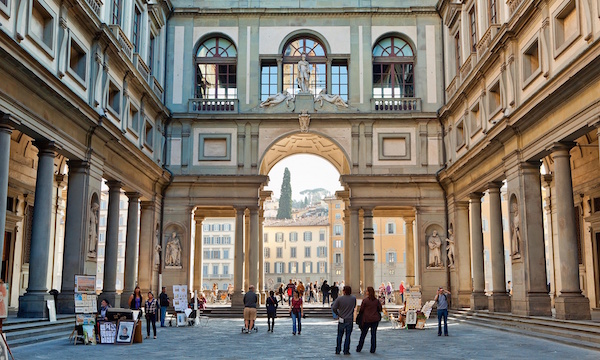
Italy’s culture ministry has implemented a sweeping and drastic overhaul of the leadership positions in Italy’s leading cultural institutions.
On Tuesday, Italian culture minister, Dario Franceschini, announced the appointment of 20 new directors, including 7 foreigners and 4 Italians returning from abroad. Half are women, and the average age is 50.
The reforms come at a time when Italy’s museums and institutions are struggling. Scarce funding and high-profile thefts and conservation scandals are threatening the country’s reputation as a major cultural destination.
In January, the Italian culture ministry took a fresh approach to recruitment by posting a classified ad in the Economist in an effort to attract top international talent.
Rome’s Borghese Gallery couldn’t afford to fix the air conditioning to control humidity
Photo: Alessio Damato via Wikimedia Commons
Despite the unprecedented diversity of the ministry’s appointments, Franceschini insisted that focus on internationality did not influence the selection.
“They were chosen on the basis of their experience; naturally they need to understand Italian art and speak Italian,” he told the Guardian. “This discussion in the museum world doesn’t make sense, because it’s about the quality of their CV.”
Florence’s Uffizi Gallery will be directed by Eike Schmidt, a German expert in Renaissance and Baroque sculpture, who previously worked at the Getty Museum in Los Angeles and Sotheby’s.
Across town, Florence’s Academia Gallery will also be helmed by a German. Cecile Hollberg comes after a successful five-year stint as director of the Municipal Museum in Brunswick, Germany.
Milan’s Pinacoteca di Brera will be under the stewardship of the British-Canadian former architect and Museum specialist, James Bradburne, who is taking over after nine years as head of Florence’s Strozzi Palace.
Elsewhere, Austrian Peter Aufreiter joins the National Gallery of Marche from Vienna’s Belvedere Museum, while his compatriot Peter Assmann takes over at Mantua’s Ducal Palace.
Another German, Gabriel Zuchtriegel, will head the Paestrum Archaeology Park. And French art historian Sylvain Bellenger will manage the Capodimonte Museum, Naples.
Museums such as Milan’s Pinacoteca di Brera need to find innovative fundraising models.
Photo: Wikimedia Commons
Franceschini’s statement that the new directors face a “great challenge” couldn’t be more true. The directors will be expected to lead Italy’s cultural reform whilst simultaneously putting together enticing exhibitions to attract tourists and locals.
At the same time, the directors must maximize their institution’s monetary potential without expecting help from the cash-strapped government. They must find ways to optimize internal revenue streams such as gift shops and cafés and attract private investment at the same time.
The new head of Milan’s Pinacoteca di Brera said that Italy can learn from foreign managers. “We’re standing at the threshold of a moment of change and optimism. Italy has been a leader in the interpretation of art many times; it’s time for them to reclaim that leadership,” he said.